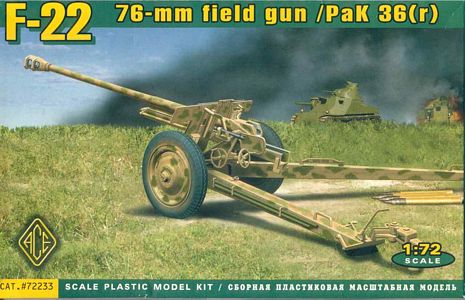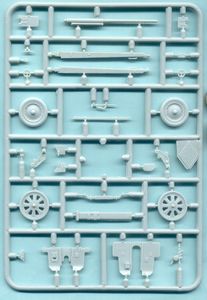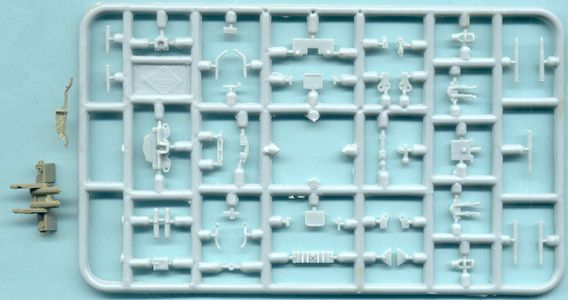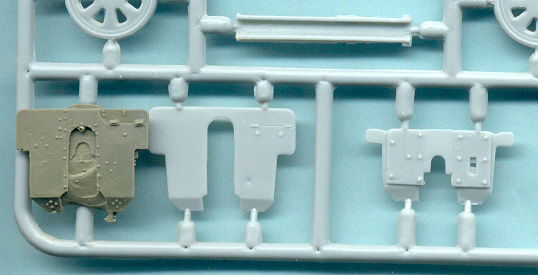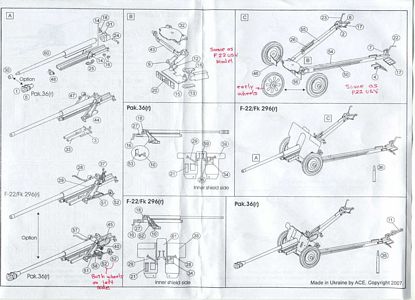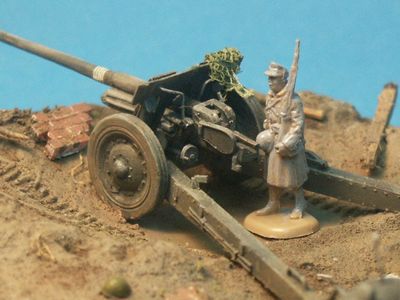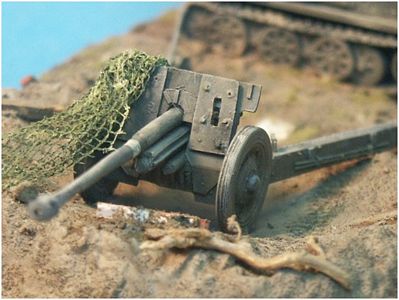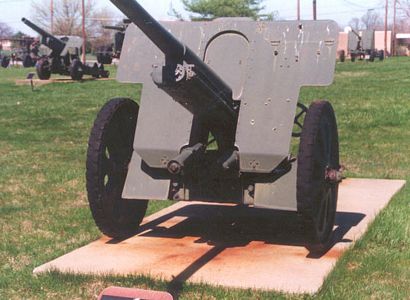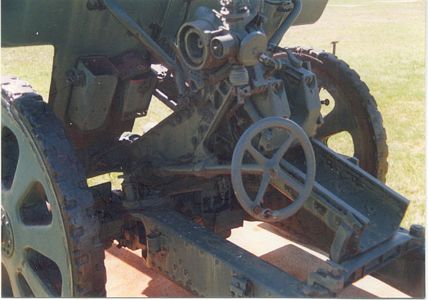F-22 76-mm Field Gun or Pak 36(r) Anti Tank Gun
Introduction The F-22 was a Soviet Divisional field gun produced in the mid-1930s and used through the war. Thousands were lost in the first months of the war and eventually replaced by the Model 1939 and the Zis-3 guns. This field gun was used by the Soviets till replaced by the F-22 M1939 and then the Zis-3 guns. The Soviets also used the F-22 as anti-tank guns. The Germans and their allies (Romania, Hungary) used the unmodified F-22 gun as field artillery (designated FK 296(r)) and as AT guns. The Pak 36(r) is the German designation of the captured gun converted to an anti-tank gun by the Germans after capturing thousands of them in 1941. The Pak 36(r) was mounted also in the German Marder III PzJgr 38(t) and the Marder II SdKfz 132 tank destroyers. The ammunition laying on the ground at the lower left corner are long 75-mm rounds for the Pak 40 antitank gun, significantly longer than the Soviet 76-mm ammunition. This ammunition, indicating that this weapon has been re-chambered for the German ammunition; I have read that the 75-mm shells for these re-chambered guns had driving bands to allow the shells to properly seat in the wider 76.2-mm barrels. Ian Hogg's book explains that (in my own words) the driving bands are rings of softer metal around the projectile that engages the barrel grooves allowing a gas-tight fit so propellant gasses do not leak out ahead of the projectile. These modified rounds could not be used in the regular Pak 40 gun because the driving bands were wider than the internal barrel diameter of the 7.5-cm Pak 40. Based on the terrain, color of the gun, and the M3 Lee tanks in the background this box art could be Tunisia in early 1943 or the Eastern Front in 1943 or 1944.
What is in the box This small ACE F22 kit #72233 comes with 64 pale-gray, injection-molded styrene parts for the gun, and 10 ammunition rounds. There are no decal markings, etched brass or resin parts, and no crew figures included. ACE Model parts are short run molded but my two kits showed no evidence of wear in the mold such as flash and soft detail. I noted no serious sink holes, flash or ejector pin marks. There are parts within the kit to build either the Soviet F-22 M1936 or the German Pak 36(r) version. Since there are parts for two variants of this gun expect some parts to be left over. The OSTMODELS F22 kit has seven gray-green cast resin parts. When I bought this model (about 1999) it was the only kit of this gun available in small scale I could find so I judge it not too harshly. You will have to clean off some flash and straighten parts in hot water. For a good display model a lot of parts like the gunsight and handwheels will have to be scratchbuilt. This Ostmodels kit only builds the F-22 or FK 296(r) version of this gun, not the Pak 36(r) version. Leftover parts from the ACE kit may help with detailing perhaps.
In the center area of the sprue are the two sets optional roadwheels: pneumatic rubber tires (parts-49) and with hard rubber tires (parts-41). At the very bottom center are the two gun shields, the lower one for the Pak 36(r) version and the higher shield or the original F-22 field gun. At lower left corner is the small telescope gunsight (part-40) for use with the German Pak 36(r) version; at the lower right corner is the artillery sight for the F-22 field artillery gun. The Ostmodels kit comes with no assembly instructions but the ACE kit instructions above can be helpful in assembly and detailing. Conclusions The Ostmodels kit, while greatly appreciated when it was released, has been greatly surpassed by the detail and quality of the ACE kit. Both the Ostmodels and the ACE kits will build into good wargame kits but I would chose the ACE kit for a display model or contest entry. The ACE model also offers the plus of being able to build the artillery version or the antitank Pak gun.
References [1] German Artillery of World War Two, by Ian V. Hogg, Greehill Books, London, or Stackpole Books, Pennsylvania, (1997) ISBN 1-85367-261-0 [2] Panzerabwehr Artillerie, Tank Power Vol. XXXIV, Wydawnieto Militaria no. no. 258 [3] http://www.achtungpanzer.com/marder-marten-series.htm In the frontal view we have the solid rubber roadwheels like those included in the ACE kit. This gun also has the large, single front gun shield. Notice that the main shield has an upper corner section that folds down for the gunsight. It appears this upper part of the gun shield was removed for the German conversion to a Pak. Under the gun barrel we see the housing for the recoil cylinders. At the bottom of the main shield are what I believe are two balancing cylinders similar to that on the later Zis-3 Divisional gun. At the end of the recoil slide we see it affixed to the travel lock and the trails pushed together. Despite the gun's age, the solid rubber tires and the tread pattern appears still in good condition. At the end of the recoil slide we see it affixed to the travel lock and the trails pushed together. Despite the age, the solid rubber tires and the tread pattern appears still in good condition. |
